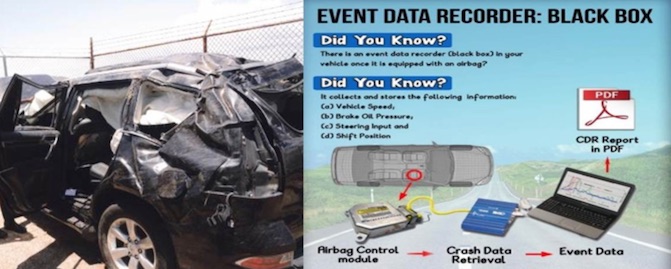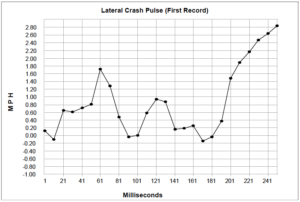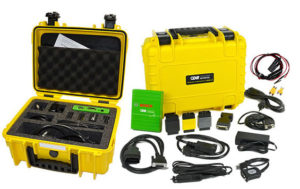Crash data retrieval (EDR) is a tool used by accident reconstructionists to download pre and post collision information from vehicles to determine driver behavior, impact severity and the cause of the crash.
Much like an airplane, almost all vehicles in the United States are equipped with a ‘black box’. In the event of an impact critical information about the crash as well as pre-crash information is recorded and stored in this black box, also known as an event data recorder (EDR). The process of obtaining this data is known as crash data retrieval.
It is a common misunderstanding that EDR data is only temporarily saved in the vehicle’s ‘black box’ and is erased after a short period of time. In the event of an airbag deployment, EDR data is almost always recorded and permanently stored. This data is never erased. Whereas, in a non-deployment event (i.e. airbags did not go off), if the event meets the manufacturer’s propriety algorithms to trigger recording, that data is saved, but can be overwritten if the vehicle is involved in subsequent collisions.


This information of vital importance when investigating a crash includes:
- Speed
- Change in Velocity (Delta-v)
- Acceleration / Deceleration
- Braking
- Pre-crash Steering Inputs/ Angle
- Seatbelt Usage and airbag deployment
 Specialized equipment is required to access the EDR.
Specialized equipment is required to access the EDR.
Unfortunately, law enforcement investigating a crash typically only retrieve the information from the Crash Data Recorder in the event of a traffic homicide. Hence, it is up to the accident reconstruction experts to download this information from the vehicles.
EDR data can help an accident reconstructionist to determine:
- pre-crash driver behavior
- crash severity
- who was at fault
Combined with his biomechanical expertise, Dr. Lloyd can use the information from the EDR to determine:
- occupant kinematics (motion in response to crash)
- whether injuries are consistent with crash severity
